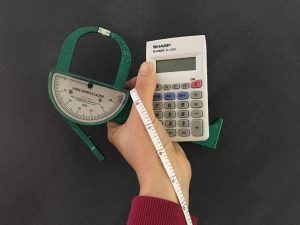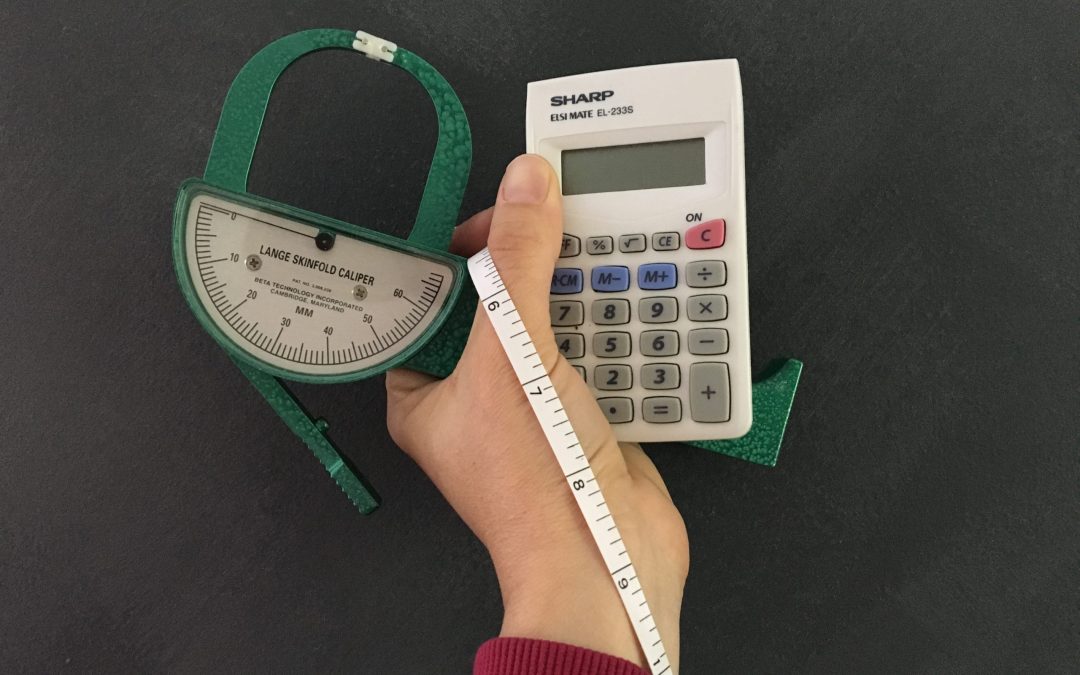“I haven’t lost any weight” is a statement most personal trainers dread.
How do you address clients after they step off an unchanged scale?
Sometimes their clothes fit better, but seeing the same number on the scale week after week is usually disappointing.
You might explain to them that they could have lost fat, but gained muscle – accounting for the lack of change. As they look at you with doubt, this is the moment of truth. Did you take other measurements before they started working with you?
Methods Used to Measure Weight Loss
1. Photos. Make sure the client wears the same outfit each time you take them and mark how far away you stand from the client so it doesn’t come out like a cheesy before and after pic. Take front and side photos. Ideally, you take the after photos when you KNOW they lost weight.
2. Clothes. Ask the client to pick a pair of “skinny jeans” or favorite suit that doesn’t fit anymore to make comparisons. This isn’t for everyone and can be discouraging if no changes happen.
3. Circumference. Measure their waist, belly button, hips, arms, thighs and other areas of interest with a tape measure.
4. Bio-electrical impedance devices. Some are built into scales and others are hand-held. They aren’t very accurate on the actual percentage of fat but are good to compare pre and post numbers for a client who wants results but doesn’t care about norms.
5. Hydrostatic weighing. Getting dunked under water repeatedly and paying big bucks for it isn’t for everyone. But, it’s the most accurate body fat test.
Method Number Six Is a Winner

Set yourself apart from other personal trainers by using skinfold calipers to measure body fat. If your gym doesn’t have a pair, pitch the idea to the manager or consider buying them yourself. It’s an investment that can have big returns when people feel assured they’re getting results from their hard work. Skinfold calipers separate fat from muscle and have about 95% accuracy.
Skinfold calipers force you and the client to find out if the hard work is really paying off. Measuring body fat accurately can be eye-opening. Many people have an unrealistic view of fat. Often times, people think they need to lose more than they actually do. On the flip side, some people don’t realize how high their body fat is until it’s tested.
General Ranges for Body Fat Percentage
(Jackson, A.S. & Pollock, M.L, 1985)
Essential
Women: 10-13%
Men: 2-5%
Athletic
Women: 14-20%
Men: 6-13%
Fitness
Women: 21-24%
Men: 14-17%
Average
Women: 25-31%
Men: 18-24%
Obese
Women: 32% and higher
Men: 25% and higher
Measure Body Fat with Skinfold Calipers
3-site skin fold test
Men: Chest, Abdominal, Thigh
Women: Tricep, Supra-ilium, Thigh
7-site skin fold test for both genders
Chest, Tricep, Mid-axillary, Sub-scapula, Abdominal, Supra-ilium, Thigh
9-site (Parillo 9-site formula) test for both genders
Chest, Bicep, Tricep, Sub-scapular, Mid-axillary, Abs, Supra-iliac, Thigh, Calf
Ensuring Accuracy with Body Fat Testing
Hydrostatic weighing is the gold standard for body fat testing. Getting close to that accuracy requires the personal trainer to know where the skin fold sites are and how to measure properly. Practice is essential for perfecting this skill.
Follow These Guidelines to Avoid Common Mistakes
1. Pinch the skin and fat in line with the underlying muscle. The tricep, abdominal and thigh are vertical, chest and suprailium are diagonal and the mid-axillary and sub-scapula are horizontal.
2. Have the person flex their muscle for two seconds to ensure you aren’t pinching it along with the fat and skin. Make sure they relax before you record the measurement.
3. Place the calipers in the middle of the pinch. It’s a common mistake to place the calipers too close to where the skin is being pulled and get a larger number than what’s accurate.
4. Hold the pinch for a few seconds to let the calipers sink into the skin. Be gentle when taking them off. Open the calipers completely so not to scratch the client.
5. Measure each site twice and a third time if the first two numbers are more than 2mm different. Add the measurements together and divide by the number of times measured.
Tricep: 2,5,5 becomes 2 + 5 + 5 = 12. Divide 12 by 3 = 4mm.
6. When you have the average number for each site (tricep, suprailium, thigh, etc.), add them up. Use a chart or calculator online to calculate the body fat percentage. You’ll need the client’s age and gender. Some calculators online ask for their height, weight and activity level also. This is usually to calculate Body Mass Index (BMI).
Tricep 4, Supra ilium 10 and Thigh 15 becomes 4 + 10 + 15 = 29mm total.
Don’t divide this number by three! This is the sum or total of the sites measured.
7. Mark the results with the date and re-measure every 3-4 weeks. Use the same side of the body each time you repeat the test.
Skinfold testing tells the client what area they are holding the most fat and how much fat they have compared to muscle on their body. If they lose fat and gain muscle, the skin fold test will show this. Then your client will believe you when you say, “You lost fat and gained muscle.”
Example:
First measurement: 24% fat and weighs 130 lbs. = 31.2 lbs. fat, 98.8 lbs. muscle
Four weeks later: 20% fat, still weighs130 lbs. = 26 lbs. fat, 104 lbs. muscle
No weight was lost according to the scale….
Yet…how many pounds of FAT did this sample client lose? 5 lbs.
The scale WON’T show this change.
Advanced Skinfold Caliper Testing
If you already use skinfold calipers and want to take your knowledge to the next level, BioSignature is a skin fold caliper method that pairs body fat with hormone malfunction. Charles Poliquin developed this 12-site skinfold testing method. This test adds knee, calf, quadriceps, hamstrings, chin & cheek to the other seven sites above. The results help the practitioner to make nutritional recommendations. Special training is required to administer this test.
One Last Tip
Consider buying a fat and muscle replica to show clients who are looking to lose weight. Many people are tactile and will understand their body better when you show them the difference between a pound of fat and muscle.
___________________________________
Beverly Hosford, MA teaches anatomy and body awareness using a skeleton named Andy, balloons, play-doh, ribbons, guided visualizations, and corrective exercises. She is an instructor, author, and a business coach for fitness professionals. Learn how to help your clients sleep better with in Bev's NFPT Sleep Coach Program and dive deeper into anatomy in her NFPT Fundamentals of Anatomy Course.


